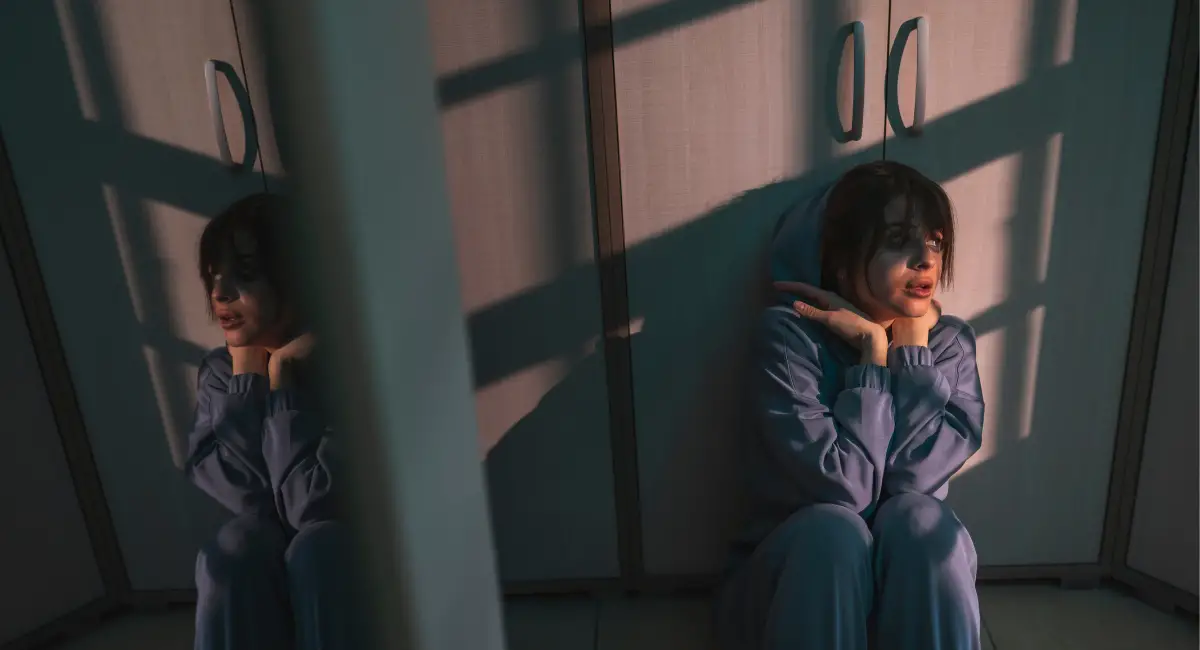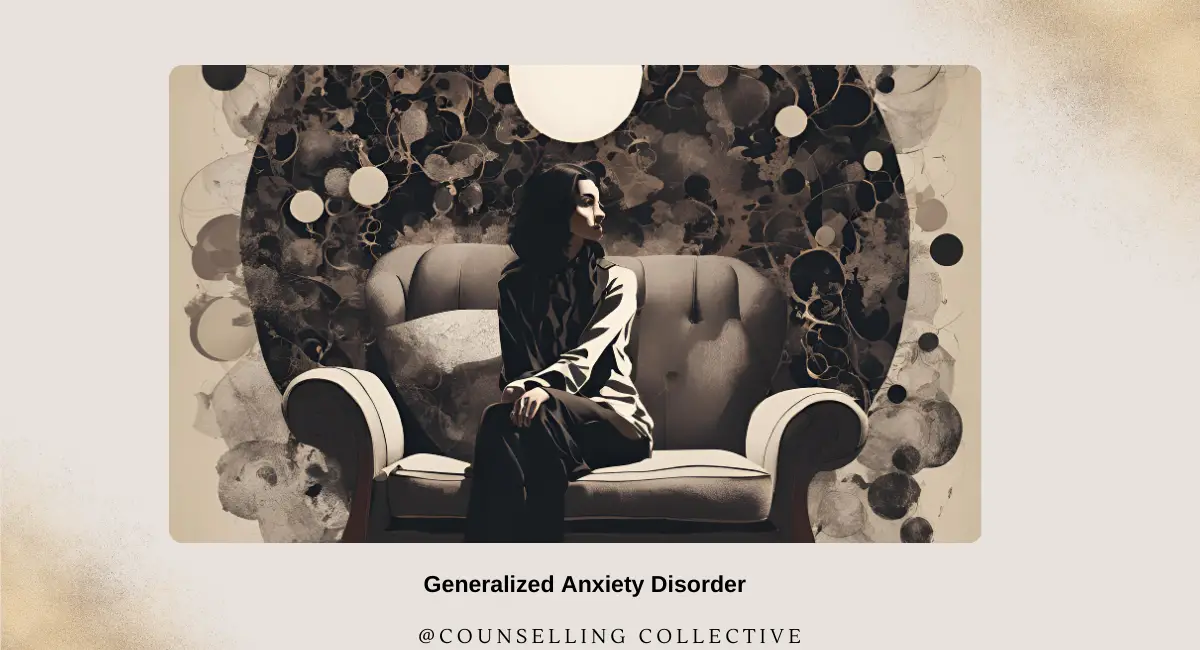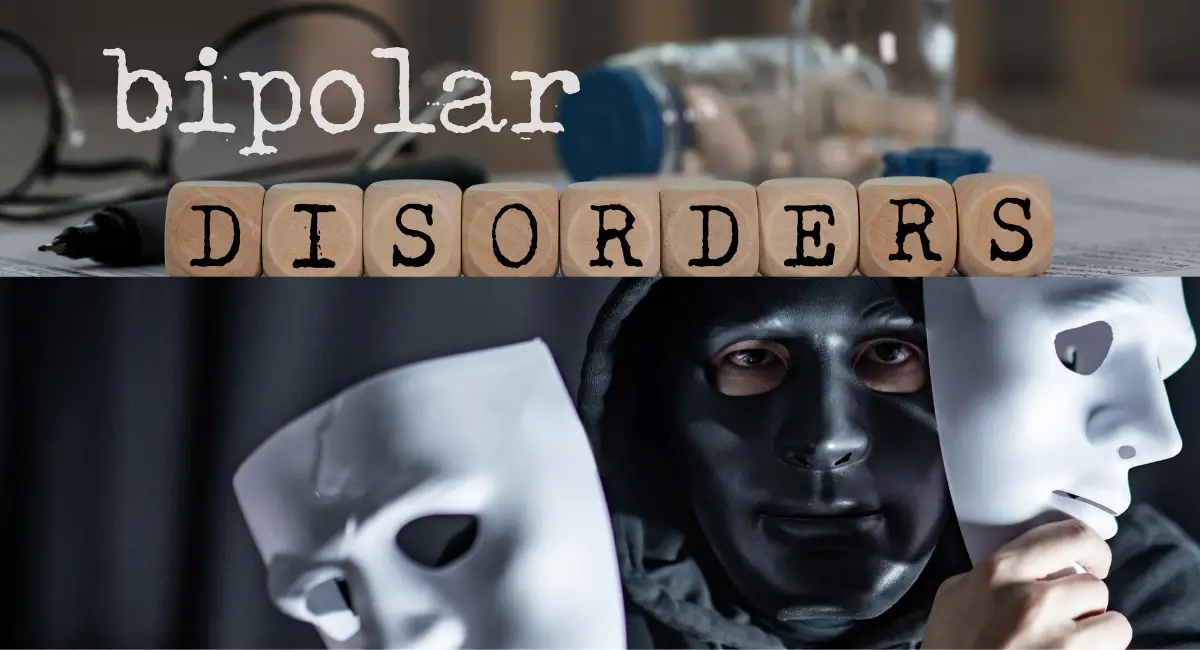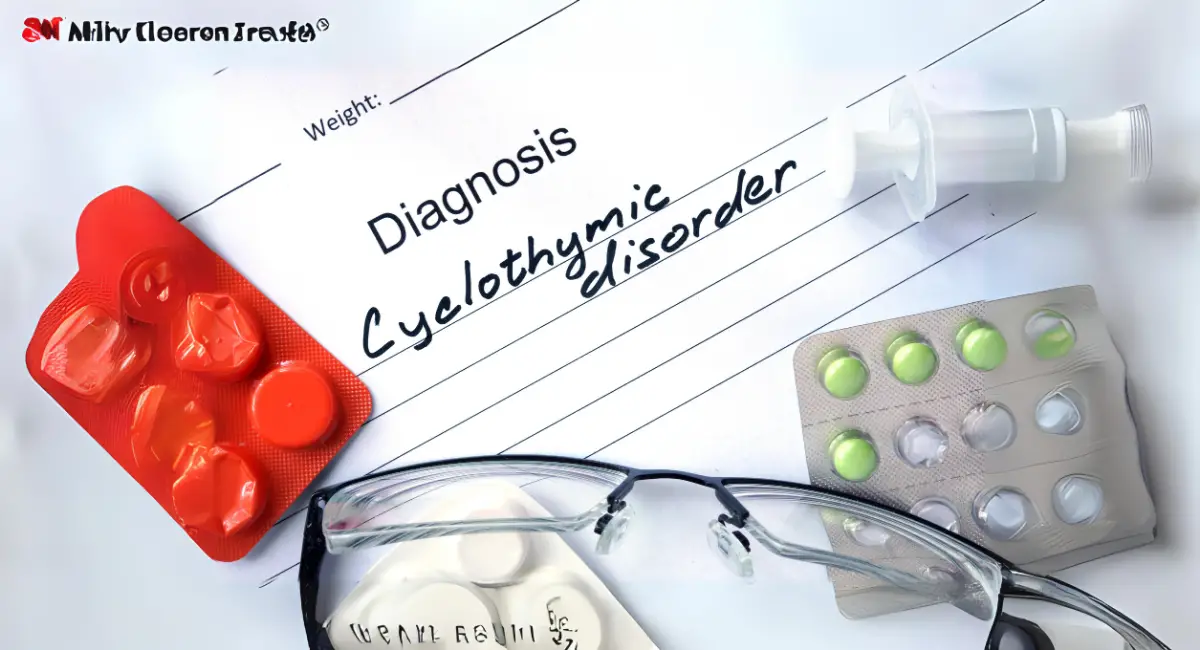
Schizoaffective Disorder: Symptoms, Causes, and Therapy Options
Contents
Introduction
Schizoaffective Disorder is a mental health condition that combines symptoms of schizophrenia (such as delusions or hallucinations) with mood disorder symptoms (such as mania or depression). It is often considered to have features of both schizophrenia and mood disorders, leading to significant impairments in daily functioning. Schizoaffective Disorder can be challenging to diagnose because its symptoms overlap with both schizophrenia and bipolar disorder or major depression.
The Diagnostic and Statistical Manual of Mental Disorders, Fifth Edition (DSM-5) defines Schizoaffective Disorder as having psychotic symptoms that occur independently of mood episodes for at least two weeks. The disorder is divided into two subtypes based on the mood component: Bipolar Type (involving manic episodes) and Depressive Type (involving depressive episodes). This article explores Schizoaffective Disorder, focusing on its Symptoms, Causes, and available Therapy Options.
Types of Schizoaffective Disorder
1. Bipolar Type Schizoaffective Disorder
Bipolar Type Schizoaffective Disorder includes symptoms of both schizophrenia (such as hallucinations, delusions, or disorganized thinking) and bipolar disorder (characterized by mood swings between manic episodes and depressive episodes). Individuals may experience periods of extreme energy, grandiosity, or impulsivity during manic phases, along with psychotic symptoms such as delusions or hallucinations.
- During manic episodes, individuals with Bipolar Type Schizoaffective Disorder may exhibit elevated mood, increased energy, and impulsive behaviors, often accompanied by psychotic symptoms.
- Psychotic symptoms, such as delusions or hallucinations, can occur during mood episodes or independently. For the diagnosis to be classified as Schizoaffective Disorder, the psychotic symptoms must persist for at least two weeks without mood symptoms.
John, a 32-year-old man, experienced delusions where he believed he was a famous scientist, even though he had no background in the field. During manic episodes, he also exhibited risky behaviors such as spending large sums of money impulsively. These psychotic symptoms persisted outside of his manic phases, leading to a diagnosis of Bipolar Type Schizoaffective Disorder. John now takes mood stabilizers and antipsychotic medications to manage his condition.
2. Depressive Type Schizoaffective Disorder
Depressive Type Schizoaffective Disorder involves symptoms of schizophrenia along with periods of major depression. In this subtype, individuals may experience deep sadness, hopelessness, and fatigue, along with psychotic symptoms such as hallucinations or delusions. The psychotic features occur both during and outside of the depressive episodes.
- Individuals with Depressive Type Schizoaffective Disorder experience major depressive episodes, which may include feelings of guilt, loss of interest in activities, changes in appetite or sleep, and suicidal thoughts.
- Psychotic symptoms can involve delusions (such as believing one is being punished) or hallucinations (such as hearing voices), which can occur during depressive episodes or independently.
Sarah, a 28-year-old woman, experiences deep depressive episodes where she feels overwhelming guilt and worthlessness. During these periods, she hears voices telling her she is a failure. Even when her mood improves, she continues to experience hallucinations and was diagnosed with Depressive Type Schizoaffective Disorder. Sarah is now undergoing therapy and takes antidepressants and antipsychotic medication to manage her symptoms.
Common Symptoms of Schizoaffective Disorder
The symptoms of Schizoaffective Disorder include both psychotic features and mood symptoms, depending on the subtype (bipolar or depressive). Below is a table outlining the common symptoms of Schizoaffective Disorder and examples of how they manifest in daily life:
| Symptom | Description/Example |
|---|---|
| Delusions | False beliefs that are not based in reality. For example, a person may believe they are being watched by an authority. |
| Hallucinations | Hearing voices or seeing things that are not there. For example, a person may hear voices that criticize them. |
| Manic Episodes | Periods of elevated mood, high energy, and impulsive behavior. For example, a person may feel invincible and make reckless decisions like spending large amounts of money. |
| Depressive Episodes | Periods of deep sadness, fatigue, and hopelessness. For example, a person may withdraw from social activities and feel overwhelmingly guilty. |
| Disorganized Thinking | Incoherent or illogical speech and thoughts. For example, a person may jump from one unrelated idea to another. |
| Mood Symptoms | Mood swings between depression and mania (bipolar type) or persistent depression (depressive type). |
| Cognitive Impairment | Difficulty with memory, attention, and decision-making. For example, a person may struggle to focus on tasks or remember important information. |
Causes and Risk Factors of Schizoaffective Disorder
The exact cause of Schizoaffective Disorder is not fully understood, but it is believed to result from a combination of genetic, biological, and environmental factors. Below are key causes and risk factors associated with Schizoaffective Disorder:
Major causes that we will discuss, include: Genetic Factors, Neurological Factors, Environmental Factors:
1. Genetic Factors
Schizoaffective Disorder tends to run in families, suggesting a genetic predisposition. Individuals with a family history of schizophrenia, bipolar disorder, or depression are more likely to develop this condition.
- Studies show that individuals with first-degree relatives who have schizophrenia or mood disorders are at a higher risk of developing Schizoaffective Disorder.
- Researchers have identified specific genes linked to both schizophrenia and bipolar disorder, which are involved in brain development and neurotransmitter regulation, particularly dopamine and serotonin.
John’s father had bipolar disorder, and his mother had schizophrenia. This family history increased John’s likelihood of developing Bipolar Type Schizoaffective Disorder, which emerged during his twenties.
2. Neurological Factors
Abnormalities in brain structure and function have been observed in individuals with Schizoaffective Disorder. These include differences in areas of the brain involved in mood regulation, cognition, and psychotic symptoms.
- Brain imaging studies reveal abnormalities in the prefrontal cortex, hippocampus, and amygdala, which are involved in regulating emotions, decision-making, and memory.
- Dysregulation of neurotransmitters like dopamine (involved in psychotic symptoms) and serotonin (involved in mood regulation) contributes to the development of Schizoaffective Disorder.
Sarah’s brain scans showed reduced activity in her prefrontal cortex, which her doctor believes is contributing to her difficulties with emotional regulation and psychotic episodes.
3. Environmental Factors
Environmental stressors, such as prenatal complications, childhood trauma, or substance abuse, can trigger the onset of Schizoaffective Disorder in individuals with a genetic predisposition.
- Prenatal exposure to infections, malnutrition, or toxins can affect fetal brain development, increasing the risk of developing Schizoaffective Disorder later in life.
- Childhood trauma, such as abuse or neglect, and substance use (especially cannabis) during adolescence or early adulthood are linked to a higher likelihood of developing psychotic symptoms.
Sarah experienced severe childhood trauma, which her therapist believes may have triggered her Schizoaffective Disorder, especially given her family history of mental illness.
Therapy and Treatment Options for Schizoaffective Disorder
Treatment for Schizoaffective Disorder typically involves a combination of medication, psychotherapy, and supportive interventions to manage both the psychotic and mood symptoms. Below are key therapy options:
1. Antipsychotic Medications
Antipsychotic medications are used to manage psychotic symptoms such as delusions and hallucinations. These medications work by regulating the activity of neurotransmitters like dopamine in the brain. Both first-generation and second-generation antipsychotics may be used, depending on the severity of the symptoms.
John takes olanzapine, a second-generation antipsychotic, to manage his delusions and hallucinations effectively. This medication reduces both the frequency and severity of his psychotic episodes, helping him regain stability and function better in daily life. Over time, olanzapine has proven instrumental in improving his overall mental health and quality of life.
2. Mood Stabilizers
For individuals with Bipolar Type Schizoaffective Disorder, mood stabilizers such as lithium or valproate are often prescribed to regulate mood swings and prevent manic episodes.
During manic phases, John exhibited an elevated mood and impulsive, risky behaviors that disrupted his life. His psychiatrist prescribed lithium, a well-known mood stabilizer, to regulate his mood swings and reduce impulsivity. Over time, the treatment significantly improved his ability to manage manic symptoms and maintain stability.
3. Cognitive Behavioral Therapy (CBT)
Cognitive Behavioral Therapy (CBT) is commonly used to help individuals challenge delusional thinking and develop coping strategies for mood swings and psychotic symptoms. CBT can also help individuals manage depressive episodes and improve their ability to engage in daily activities.
Sarah attends weekly CBT sessions where she learns effective strategies to manage the auditory hallucinations she experiences during depressive episodes. Her therapist works with her to reframe negative thoughts and critically evaluate delusions, leading to improved functioning and resilience during depressive phases.
4. Psychosocial Interventions
Psychosocial interventions, such as social skills training and vocational rehabilitation, focus on helping individuals with Schizoaffective Disorder improve their social functioning and job skills. These interventions can help individuals build relationships, find employment, and maintain a sense of purpose.
Sarah participates in a vocational rehabilitation program designed to enhance her job skills and help her secure part-time employment. This supportive initiative has significantly bolstered her self-esteem and increased her social engagement, which has contributed to alleviating the severity of her depressive episodes.
Long-Term Management of Schizoaffective Disorder
Managing Schizoaffective Disorder over the long term requires consistent treatment and support. Below are key strategies for long-term management:
- Medication Adherence: Consistently taking antipsychotic medications and mood stabilizers can help prevent relapse and manage both psychotic and mood symptoms.
- Ongoing Therapy: Regular participation in CBT or other forms of therapy helps individuals manage stress, cope with mood swings, and challenge psychotic symptoms.
- Family and Social Support: Building a strong support system of family, friends, and mental health professionals is essential for helping individuals maintain stability and improve their quality of life.
Conclusion
Schizoaffective Disorder is a complex mental health condition that involves both psychotic symptoms and mood disturbances. The disorder is divided into two subtypes: Bipolar Type, which includes manic episodes, and Depressive Type, which involves depressive episodes. Treatment typically involves a combination of antipsychotic medications, mood stabilizers, and Cognitive Behavioral Therapy (CBT). Long-term management strategies, including medication adherence, therapy, and psychosocial support, are essential for maintaining stability and improving quality of life for individuals living with Schizoaffective Disorder.
References
- American Psychiatric Association. (2013). Diagnostic and Statistical Manual of Mental Disorders (5th ed.). Washington, DC: American Psychiatric Publishing.
- Craddock, N., & Owen, M. J. (2010). The Kraepelinian dichotomy – Going, going… but still not gone. The British Journal of Psychiatry, 196(2), 92-95.
- van Os, J., Kenis, G., & Rutten, B. P. (2010). The environment and schizophrenia. Nature, 468(7321), 203-212.
- Malhi, G. S., Bellivier, F., & Potash, J. B. (2021). Bipolar and Schizoaffective Disorder: Complex Clinical Syndromes and Their Treatment. World Psychiatry, 20(1), 56-60.
- Vieta, E., Salagre, E., Grande, I., Carvalho, A. F., & Sole, B. (2018). Bipolar disorders. Nature Reviews Disease Primers, 4(1), 1-22.
Explore Other Mental Health Issues








